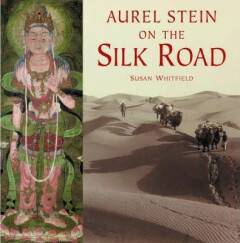
- Afhalen na 1 uur in een winkel met voorraad
- Gratis thuislevering in België vanaf € 30
- Ruim aanbod met 7 miljoen producten
- Afhalen na 1 uur in een winkel met voorraad
- Gratis thuislevering in België vanaf € 30
- Ruim aanbod met 7 miljoen producten
Zoeken
Omschrijving
In 1900 a secret sealed-up cave was discovered by a Daoist priest among the many caves dotting the cliff face at Dunhuang, an oasis town on the Silk Road. Its entrance had been plastered over and disguised but, when opened, it was revealed to be crammed with ancient Buddhist manuscripts, printed documents and paintings. The sheer volume and exceptional condition of the finds, preserved in the desert climate since the early eleventh century, excited international archaeological and popular interest. In 1907, Sir Marc Aurel Stein (1862-1942), a Hungarian-born explorer employed by the British in India, was the first foreigner to gain access to the secret cave archive at Dunhuang. His expeditions, published in full in the 1920s, made him a celebrity whose intrepid exploits helped to reveal the long-forgotten history and exotic geography of the Silk Road.
Specificaties
Betrokkenen
- Auteur(s):
- Uitgeverij:
Inhoud
- Aantal bladzijden:
- 144
- Taal:
- Engels
Eigenschappen
- Productcode (EAN):
- 9780714124162
- Verschijningsdatum:
- 25/04/2004
- Uitvoering:
- Boek
- Afmetingen:
- 250 mm x 250 mm
- Gewicht:
- 900 g

Alleen bij Standaard Boekhandel
+ 61 punten op je klantenkaart van Standaard Boekhandel
Beoordelingen
We publiceren alleen reviews die voldoen aan de voorwaarden voor reviews. Bekijk onze voorwaarden voor reviews.











